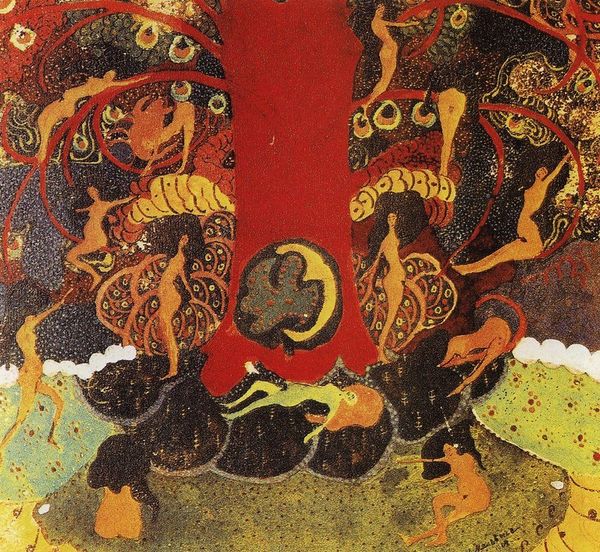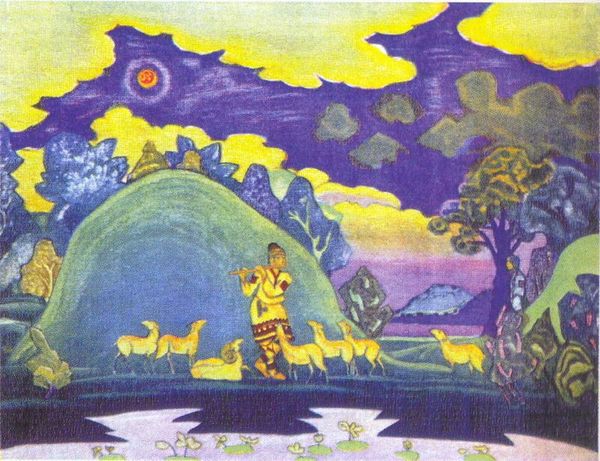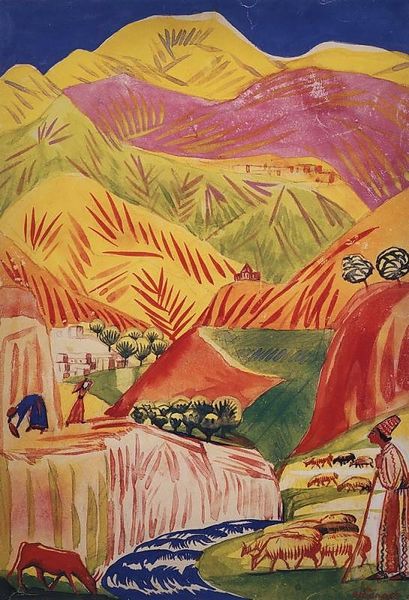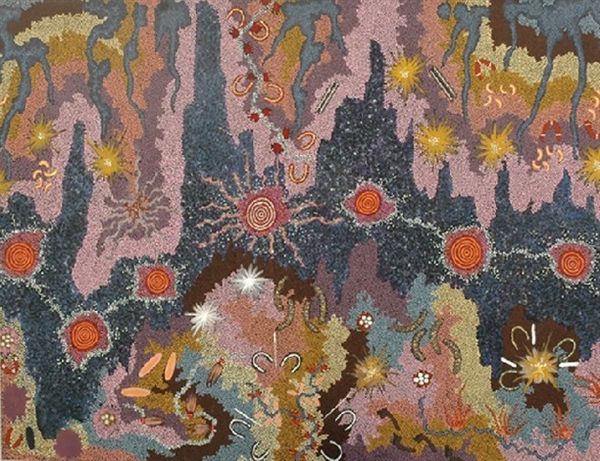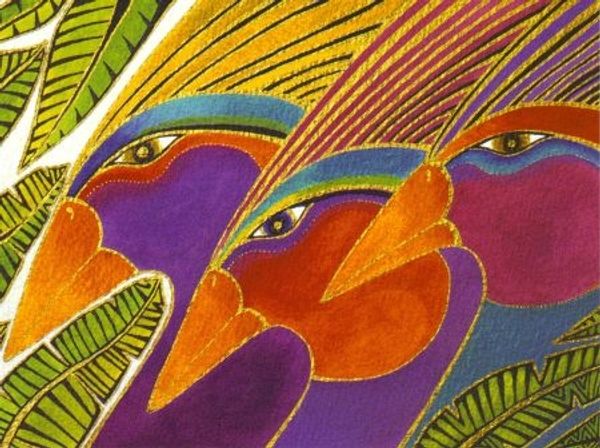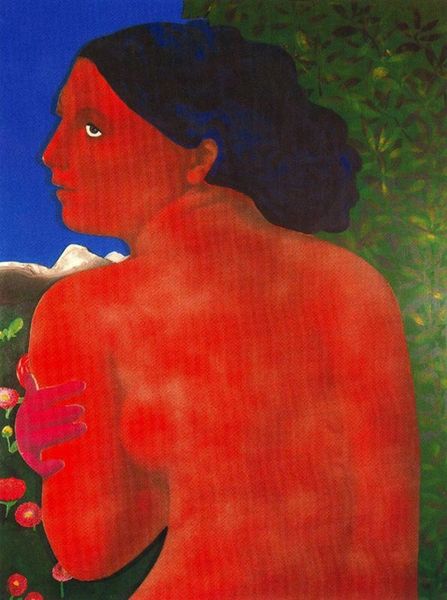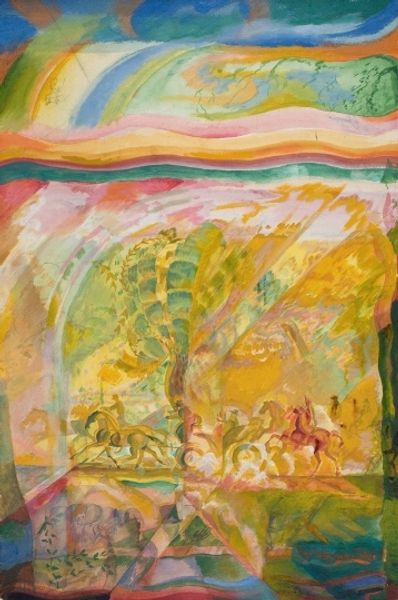
tempera, painting
#
organic
#
tempera
#
painting
#
landscape
#
figuration
#
symbolism
Copyright: Public domain
Curator: This painting by Kazimir Malevich, titled "Veil," was completed in 1908, quite a bit before his suprematist period, using tempera. It now resides in the Tretyakov Gallery in Moscow. Editor: Well, my immediate impression is that it has the feeling of a folk tale. It's dreamlike and has this flattened perspective. It reminds me a bit of Klimt, actually. But is that figure laid out...dead? Curator: Malevich was exploring symbolism and mysticism at the time. The reclining figure, surrounded by floral motifs, set against this dramatic, almost theatrical landscape, can be interpreted as being in a state of transcendence or maybe rebirth. The figure's halo also invites that sort of allegorical interpretation. Editor: It feels very staged to me. In what context would this painting have been made? Is Malevich engaging in a type of political theatre in critiquing a specific person or event? Are the red tones meant to illicit a feeling of being overwhelmed and trapped? It’s so claustrophobic, with the figure enclosed within all those repetitive shapes and colors, under this veil or shadow. Curator: Maybe! It’s thought Malevich moved between Symbolism and early Fauvism in this phase and those influences certainly are obvious, but I like your read, especially given how Russia was situated politically. Editor: Exactly. And is "veil" a descriptor of something that we are meant to pierce? What is Malevich pointing us towards, if so? And, importantly, how does that position align with a deeply troubled time in Russian history? Or how does the religious undertone potentially allude to his views about women at that period? I would love to know more. Curator: It makes you think. He was already sowing the seeds for his more radical explorations to come... it has me looking in a new way, thinking of it more like a manifesto about political struggle... Editor: Yes, exactly, maybe we should view his trajectory of "radical explorations" as a continuum instead of these siloed movements or singular snapshots.
Comments
No comments
Be the first to comment and join the conversation on the ultimate creative platform.
